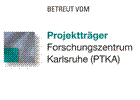|
The Project's Objective
The overall objective of the research project is to create an integrated simulation environment which allows to
simulate the dynamic behavior of machine tools using holistic virtual models, resulting in the ability to study the machine tool's behavior
and properties from the frequency domain over the time domain up to real time simulation in order to optimize single parts as well as the
machine's overall configuration and behavior.
The simulation environment needs to incorporate process force models for consideration of the chipping process during optimization. Additionally,
the control properties and the actuation systems need to be represented in the model because the system's stiffness depends largely on the
stiffness of the actuation system. The prognosis capabilities of the virtual models need to be studied towards their suitability in the
industrial development process. This, as well as validating the coupled actuation-structure-simulation to be implemented, requires the testing
and analysis of physical prototypes.
Finally, the models have to be simplified (by means of data reduction) in order to obtain models suitable for real-time-simulation. By connecting
virtual prototypes with real CNC controllers, the behavior of the moving machine tool can be studied in real time.
The result will be a holistic simulation and optimization approach. The exact requirements for such an approach, however, still need to be
specified. It needs to be clarified which optimization methods are the most suitable for the desired results, to which level of detail the
complex interactions between kinematics, strutural mechanics, controller layout and process reactions need to be modeled. Last, the robustness
of the optimization routines need to be evaluated.
The project success can be monitored by the following quality characteristics: the user-friendliness of the software tools, the compatibility of
the model data between different software tools and platforms, the quality and realism of the models and procedures applied, which need
to be validated by metrological analysis of real prototypes, and finally the siginificant improvement in product quality towards static and
dynamic properties while making the product development process more efficient.

→ The approach...
|








